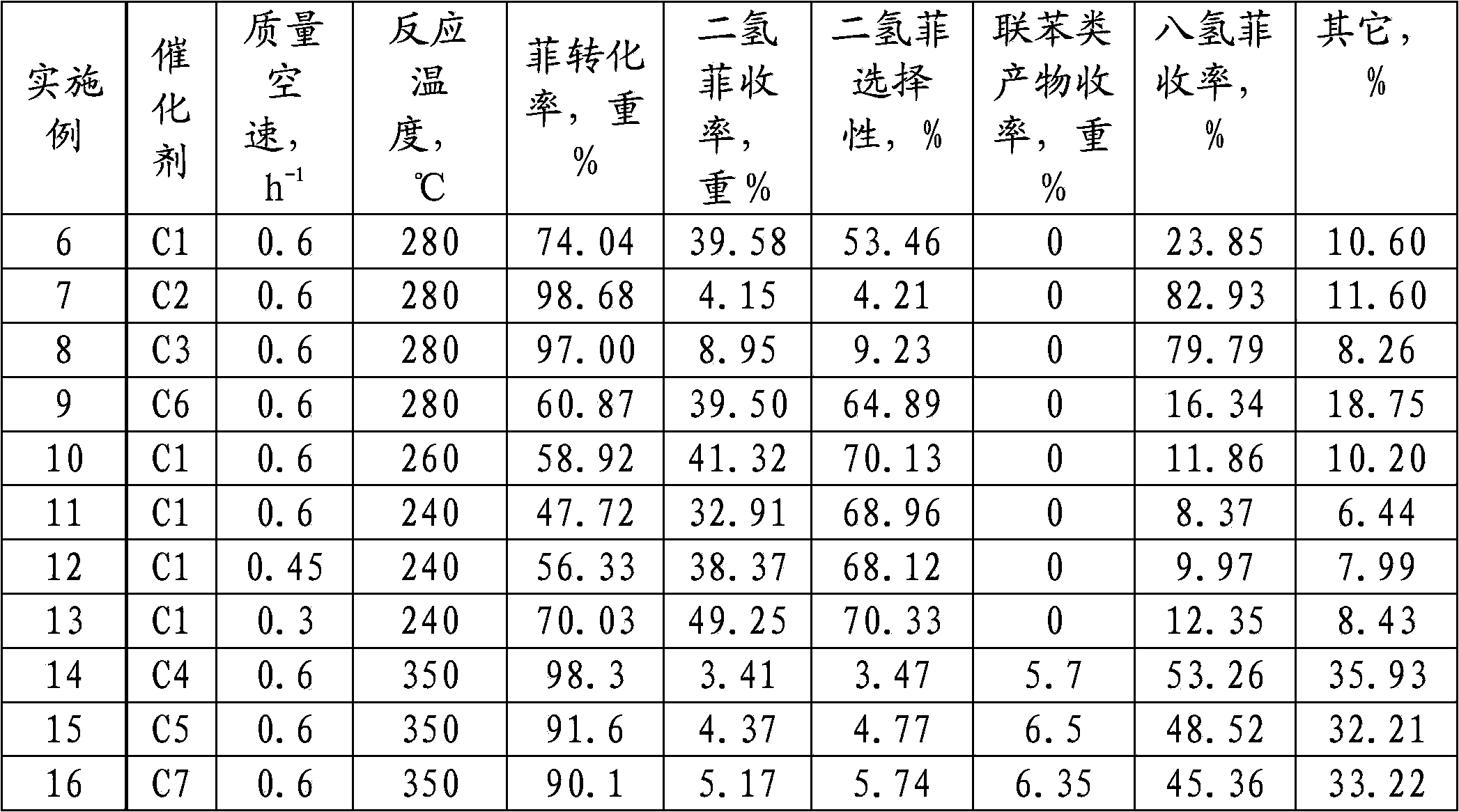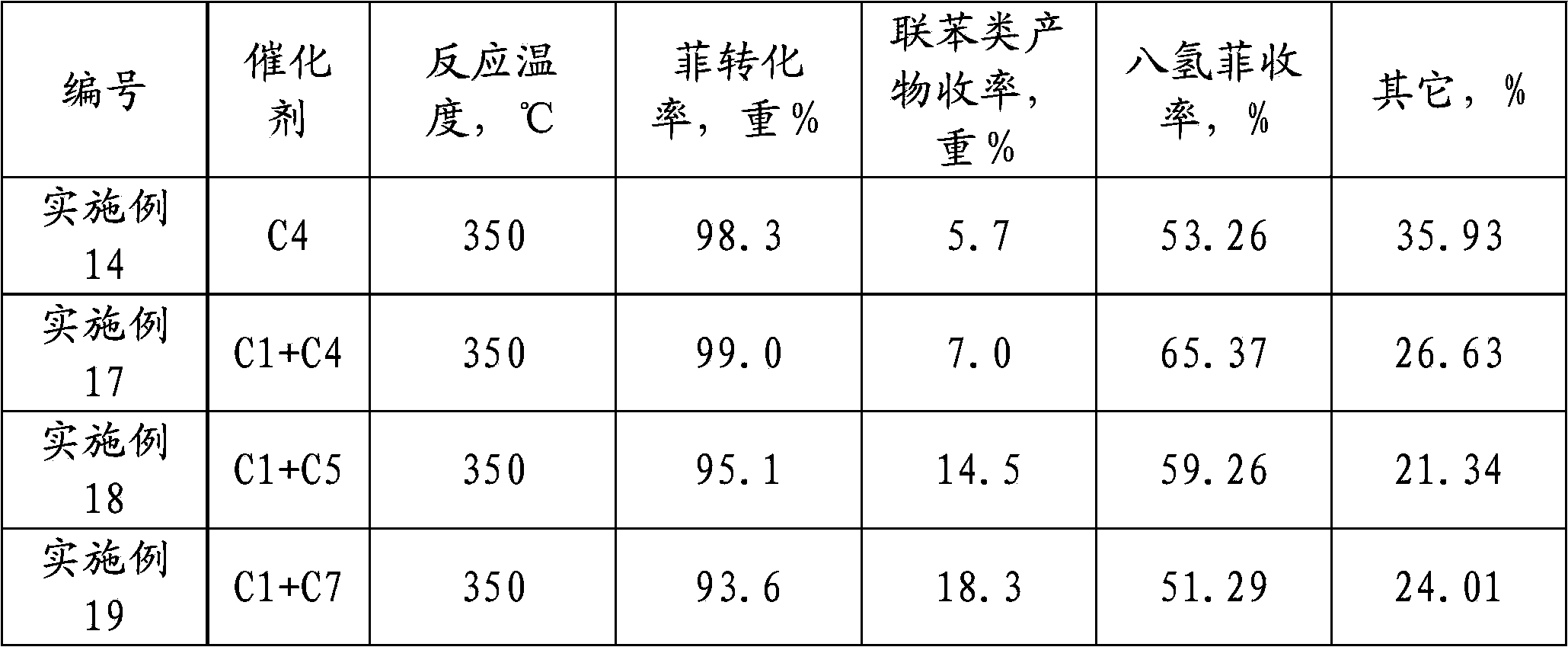Method of hydro-conversion of polycyclic aromatic hydrocarbons
A technology for polycyclic aromatic hydrocarbons and hydroconversion, which can be used in hydrotreating process, treatment of hydrocarbon oil, petroleum industry, etc., and can solve the problem of high hydrogen consumption
- Summary
- Abstract
- Description
- Claims
- Application Information
AI Technical Summary
Problems solved by technology
Method used
Image
Examples
Embodiment 1
[0041]Weigh 11.8 grams of cobalt nitrate and 17.4 grams of ammonium heptamolybdate, and make 110 milliliters of co-immersion solution with deionized water. Use this solution to impregnate 100 grams of clover-shaped alumina strip carrier S1 with a circumscribed circle diameter of 1.4 mm from Changling Catalyst Branch Company (calcined at 600°C for 4 hours) for 6 hours, then dried at 120°C for 4 hours, and calcined at 420°C for 4 hours , to obtain catalyst C1. Measured by X-ray fluorescence spectrometry, the catalyst C1 contains 2.4% by weight of CoO, containing MoO 3 It is 12.0% by weight.
Embodiment 2
[0043] Weigh 11.7 grams of nickel nitrate and 17.4 grams of ammonium heptamolybdate, and make 110 milliliters of co-immersion solution with deionized water. 100 g of S1 carrier was impregnated with this solution for 6 hours, then dried at 120° C. for 4 hours, and calcined at 420° C. for 4 hours to obtain catalyst C2. Measured by X-ray fluorescence spectrometry, the catalyst C2 containing NiO is 2.4% by weight, containing MoO 3 It is 12.0% by weight.
Embodiment 3
[0045] Weigh 9.55 grams of nickel nitrate and 25.7 grams of ammonium metatungstate, and make 110 milliliters of co-immersion solution with deionized water. 100 g of S1 carrier was impregnated with this solution for 6 hours, then dried at 120° C. for 4 hours, and calcined at 420° C. for 4 hours to obtain catalyst C3. Measured by X-ray fluorescence spectrometry, the catalyst C3 containing NiO is 1.8% by weight, containing WO 3 It is 18.5% by weight.
PUM
 Login to View More
Login to View More Abstract
Description
Claims
Application Information
 Login to View More
Login to View More - R&D
- Intellectual Property
- Life Sciences
- Materials
- Tech Scout
- Unparalleled Data Quality
- Higher Quality Content
- 60% Fewer Hallucinations
Browse by: Latest US Patents, China's latest patents, Technical Efficacy Thesaurus, Application Domain, Technology Topic, Popular Technical Reports.
© 2025 PatSnap. All rights reserved.Legal|Privacy policy|Modern Slavery Act Transparency Statement|Sitemap|About US| Contact US: help@patsnap.com


